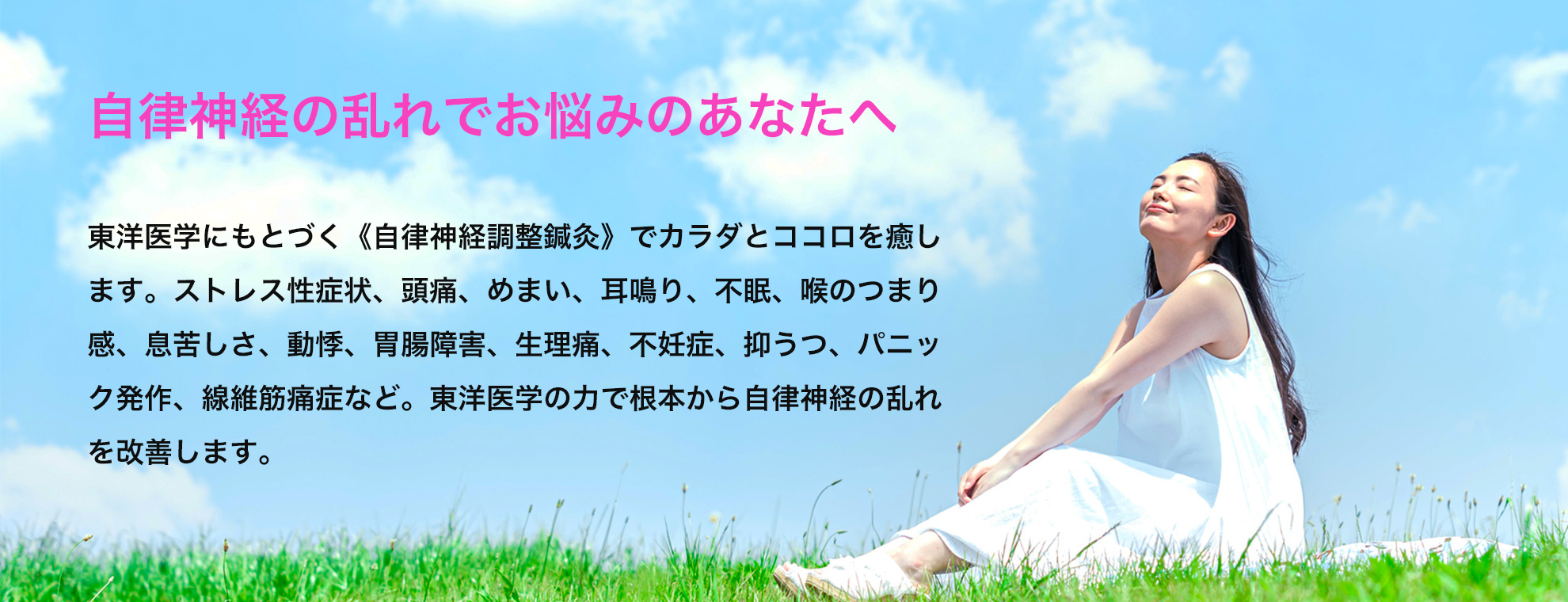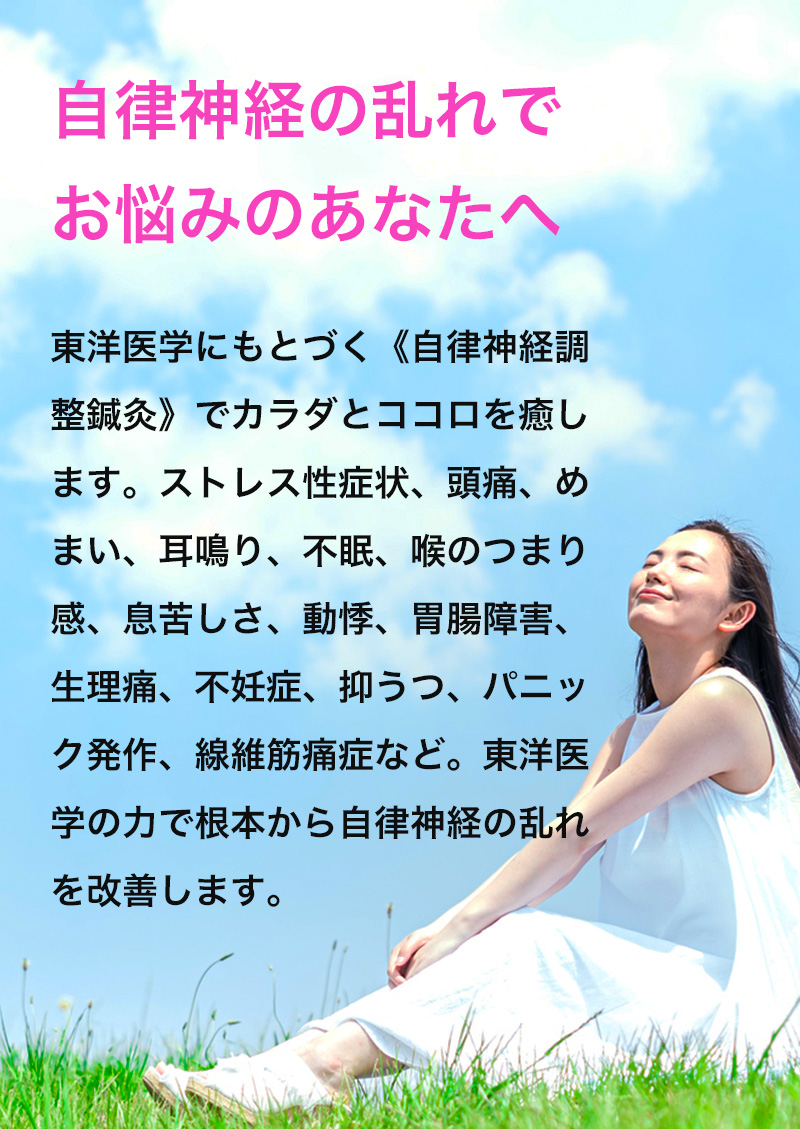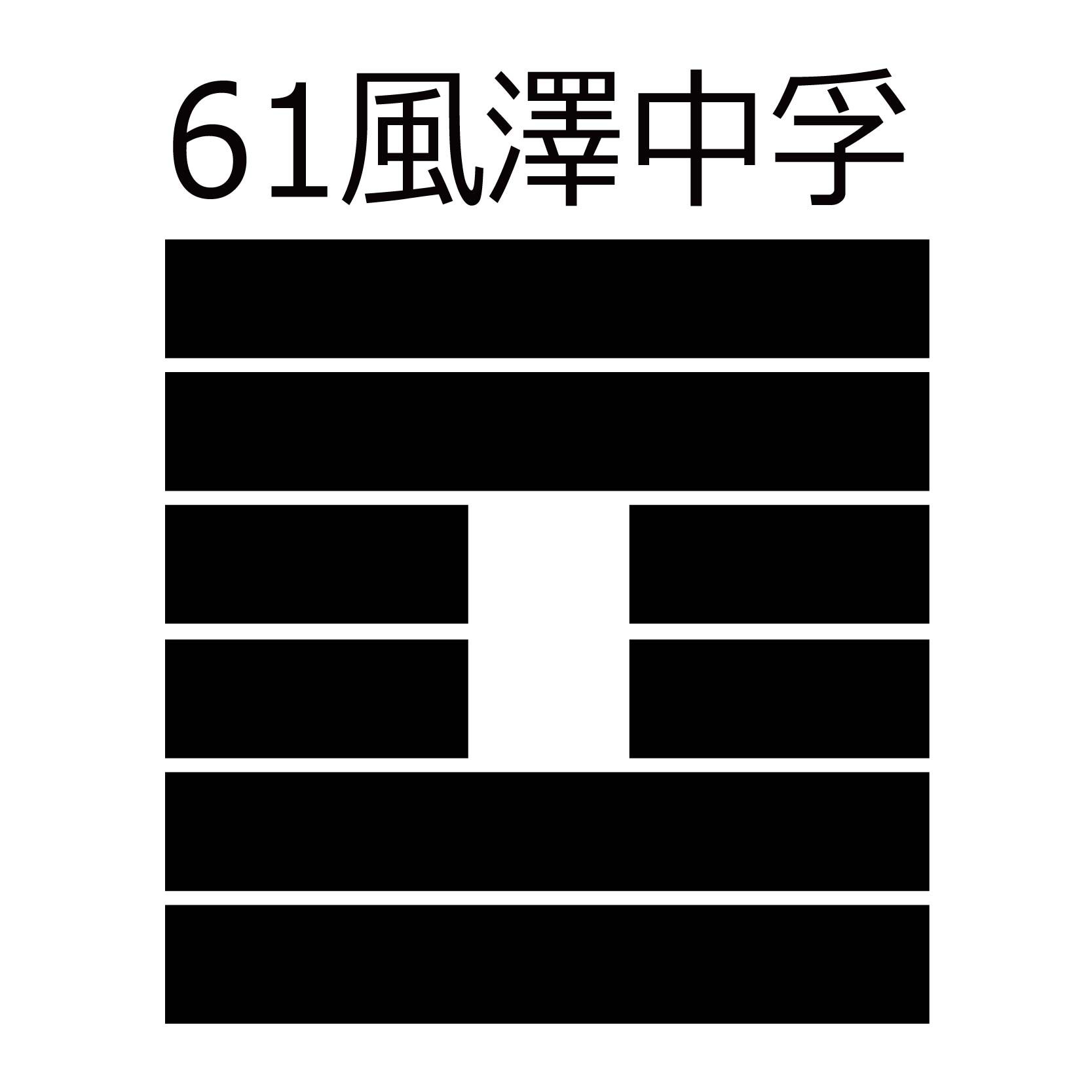稲森 英彦 Hidehiko INAMORI
プラナ松戸治療室代表
【略歴】
東京都生まれ。慶應義塾大学文学部卒。
1998年に鍼灸師資格を取得。心療内科クリニックに勤務し、東洋診療部門を立ち上げる。
2005年に自律神経系・心療内科系鍼灸院のプラナ松戸治療室を開設。
現在(2025年)臨床歴27年。



ストレスによる息苦しさ、めまい、喉のつまり感、動悸、吐き気、不眠、頭痛、首肩腰痛、慢性疲労、不妊、目の不調などに。全身のバランスを整えて自律神経の乱れを癒します。
詳細はコチラ
頭皮の特定の機能局在領域(脳の各機能に対応する部位)やツボに細い鍼を優しく刺激することで、脳機能の活性化、神経伝達の改善、自律神経のバランス調整、精神的な安定を目指す施術です。
詳細はコチラ
息苦しさ、不眠、動悸、うつ症状、痛み、めまいなど、幅広い症状に鍼灸で改善をもたらした症例集です。自律神経の調整から、体調不良まで、心身の調和を取り戻す症例をご紹介します。
詳細はコチラご予約、ご相談、ご質問などはこちらのフォームをご利用下さい。
35歳を過ぎてからの出産、いわゆる「高齢出産」は、現代の日本では決して珍しくありません。しかし、身体の変化やリスクへの不安を感じている方も多いのではないでしょうか?
この記事では、最新の統計データをもとに高齢出産の現状を解説しつつ、体質改善や妊活サポートとしての「鍼灸治療」の可能性についても触れていきます。
一般的に35歳以上での初産を「高齢出産」といいます。年齢を重ねるにつれて妊娠力が低下し、妊娠中の合併症や分娩時のリスクが増すことが知られています。
厚生労働省の統計によると、日本では高齢出産が増加しています。
年齢層 出生数(人) 割合(%)
30~34歳 279,517 36.3%
35~39歳 183,327 23.8%
40歳以上 47,996 約6.2%
35歳以上の出産が全体の約30%を占めており、晩産化が進んでいることがわかります。
高齢出産には以下のようなリスクがあります:
• 流産率の上昇:40歳で約40%、45歳で約50%
• 妊娠高血圧症候群・妊娠糖尿病
• 早産や帝王切開の可能性
• 胎児染色体異常のリスク増加
こうしたリスクに向き合うには、身体の内側からのケア=体質改善が重要となります。
東洋医学では、妊娠しやすい身体づくりには「腎(じん)」の力を高めることが重要とされています。「腎」は生命力・ホルモンバランス・生殖機能に関係するとされ、加齢とともにその力は弱まると考えられています。
鍼灸治療は以下のような面で、高齢出産を目指す女性の身体をサポートします:
● ホルモンバランスの調整
• 下腹部や背中のツボ(関元、命門など)への施術により、内分泌系を整える。
● 血流改善
• 子宮や卵巣への血流を促進し、内膜の質向上や卵の育ちを助ける。
● 自律神経を整える
• 不安やストレス、睡眠の乱れを和らげることで、妊娠に適した心身の状態へ。
• 高齢出産は増加しており、35歳以上の出産は全体の約3割
• 年齢によるリスクがあるものの、早期の準備と体質改善で備えられる
• 鍼灸は妊娠しやすい身体づくりや心の安定に役立つ伝統的な療法
「妊娠できる身体をつくる」ことは、年齢に関係なく今からでも始められます。
妊活や高齢出産に不安を感じている方は、東洋医学的なアプローチ=鍼灸治療を選択肢に加えてみてはいかがでしょうか?
高齢出産に向けて体調を整えたい方へ。
当院では、一人ひとりの体質や周期に合わせた妊活鍼灸を提供しています。
お気軽にご相談ください。
またはお電話でのお問い合わせも承っております。
📞 047-301-9015(日曜・月曜定休)
「気」という言葉はよく耳にしますが、実際にそれが何かを説明するのは難しいものです。東洋医学では、この「気」が体や心、そして自然のすべてを動かす力だと考えます。
そしてその「気」の流れや変化を読み取る手がかりとなるのが、『易経(えききょう)』という古代の書物です。一見占いの本のように見える「易」ですが、じつは自然と人間のつながりを教えてくれる深い知恵がつまっています。
今回は、「気とは何か?」をテーマに、東洋医学と「易」の関係をやさしくひもといていきます。
東洋医学の基本理論である「陰陽論」と「五行説」は、どちらも『易経』の思想から派生したものです。
具体例:
• 『易経』では、宇宙のすべては「陰」と「陽」の相互作用で成り立つとされます。これは東洋医学の「陰虚」「陽盛」などの診断や治療法にそのまま応用されています。
• 五行(木・火・土・金・水)は、陰陽の変化が展開する過程を象徴的に表したものとされ、『易経』の64卦の中にもその要素が含まれます。
「易」の本質は「変化(易)」にあります。これは、身体を「気」の流れやバランスの変化によってとらえる東洋医学の根本思想と一致します。
具体例:
• 東洋医学では、病とは「気・血・水」の流れが滞った状態=「不易(変化が止まった状態)」と捉え、治療は「変化=易」による調整を行います。
• たとえば、舌診や脈診では一時の状態ではなく、変化の兆しを読むことが重視されます。これも「易」の「兆しを読む」思想に由来します。
『易経』の「八卦(はっか)」は、自然界のあらゆる現象を象徴的に8つに分けたもので、これも東洋医学の臓腑・経絡の概念と対応しています。
具体例:
• 「坎(かん)」=水は腎に、「離(り)」=火は心に対応するという具合に、八卦と五臓六腑がリンクして解釈されることがあります。
• また、経絡の流注や気の循環のルートに八卦の配列を応用する流派もあります(例:太極図に基づく診断や治療法)。
『易経』では、万物の性質や状態を「象(イメージ)」と「数(数理)」で捉えます。東洋医学の弁証論治も、まさにこの「象と数」による直感と理性の統合により成り立っています。
具体例:
• 舌の色や形、苔の状態などを「象」として観察し、体内の状態を「卦」のように読み解く。
• 漢方の処方にも「数(分量や組み合わせ)」の妙がある。これらも「易」の思想的応用といえます。
つまり「易」は単なる占いの書ではなく、自然界の普遍的な変化の法則を記した哲学書です。東洋医学は、この変化とバランスの法則(陰陽・五行・気の流れなど)を、人体というミクロコスモスに応用して体系化された医学です。
つまり、「易」は東洋医学の“思想的骨格”ともいえる存在なのです。
これまで『易経』と東洋医学のつながりについて説明してきましたが、実際にわたしが「易」を使って体験したお話を一つ紹介したいと思います。
この話を通して、「易」がどのように「気」の流れや変化を読み解く手がかりになるのか、感じていただければ幸いです。
わたしの結婚当初、妻がわたしの母から譲り受けた指輪をなくしてしまったことがありました。
わたしの母は6歳のときに自分の母親を亡くしており、その指輪は形見の品でした。母はその大切な指輪を、妻への結婚祝いとして贈ったのです。
ある日、妻は伊豆にある親戚の別荘の片付けをしていました。
帰り際、ふと自分の指を見ると──指輪がない!
一生懸命に別荘の中を隈なく探したそうですが、どうしても見つかりませんでした。
そして妻から私のもとへ、落ち込んだ声で電話がかかってきました。
わたしは、ふと思い立って易を立ててみることにしました。
出た卦は「風沢中孚」──何爻だったかは忘れてしまいましたが、
小成卦は「巽」と「兌」の組み合わせです。

巽の象意は、風、台風、吹雪など。
兌の象意は、場所でいえば沢、沼、溝、湖沼などです。
わたしは妻に「近くに水の流れているところはある?」と尋ねたところ、「ある!」と言います。
そこでわたしは「そこを丁寧に探してみて」と伝えました。
妻がその通りにしたところ、ほどなくして「指輪があった!」と喜びの電話がありました。
指輪は、別荘の前の道沿いにある、側溝のそばで風に吹かれていたのです。
私たちの体は、単なる器ではありません。目に見えないエネルギー「気」が、そこに流れてはじめて、生きた存在として動き始めます。
東洋医学は、この「気の流れ」を読み取り、整える医学です。そしてその背後には、『易経』という古代の叡智が流れています。
『易経』は、自然や人間のあらゆる変化を「陰」と「陽」、「八卦」というかたちでとらえた書物です。そこには、「万物は常に変化し続けている」という深い視点があります。
東洋医学もまた、人の体や心を「固定されたもの」としてではなく、「移り変わるもの」「揺らぎながら調和をめざすもの」として見つめています。つまり、どちらも「いまこの瞬間の変化」を読み解くための知恵だといえるでしょう。
そして、気とは何か──。
それは、体内をめぐるエネルギーにとどまらず、
「人と自然をつなぎ」「時間と空間を超えてはたらく」ものでもあります。
たとえば、わたしが占った指輪の話のように、「気」は物の位置や人の感情、出来事の流れにさえ関わっているように感じられます。
気は、風や水のように姿を変えながら、場を動かし、人と人の間を動かし、あるいは“過去の想い”さえ、現在の出来事に影響を与えるように働きます。
だからこそ、東洋医学では「体だけを見る」のではなく、
「人の背景、感情、季節、時間帯、その人が置かれている環境」までを診るのです。
『易経』と東洋医学は、表面だけでは見えない「気の動き」を、
まるで風の音や水のささやきに耳を澄ませるように読み取ろうとする営みです。
そしてそれは、いまを生きる私たちにも、「見えないものの流れに気づく力」を育ててくれます。
目に見えないけれど、たしかにそこにある流れ──それが、気。
そして、その流れを読むための羅針盤──それが、「易」なのです。
「これが最後の挑戦になるかもしれません」
37歳の女性がそうおっしゃって、当治療室に初めて来られた日のことを、今でもよく覚えています。
年齢の壁、過去の経験、未来への不安。
不妊治療を続けてこられた多くの方が、こうした思いを抱えています。彼女もまた、自分の体に限界を感じながら、それでも「後悔しないようにできることをやりたい」と静かに決意を語ってくださいました。
不妊と一口に言っても、そこにある原因は人それぞれです。
この方の場合、冷え性が慢性化しており、血流の滞り、ホルモンバランスの乱れ、自律神経の不安定さが重なっていました。
また、不妊治療そのもののストレスも大きく、心の緊張が体のこわばりとして現れているようでした。
不妊は「病気」として扱われがちですが、実際には体全体の働きのバランスが崩れている「状態」であり、回復する余地が残されていることも少なくありません。
まず始めたのは、冷えをとり、巡りをよくすること。
鍼灸治療では、東洋医学的な視点から「腎(じん)」の力を高め、子宮・卵巣の働きをサポートすることを目的に施術を行いました。
また、胃腸の働きや睡眠の質を整えることで、ホルモンの土台となる“気血”をしっかり養っていきました。
必要なのは、ただ子宮や卵巣に刺激を与えることではなく、全身の調和を取り戻すこと。鍼灸はそのためのやさしく、確かな手段になります。
身体が少しずつ整ってきたタイミングで、体外受精に臨まれました。
しかし、残念ながら妊娠には至ったものの、初期流産という形で終わってしまいました。
この時、彼女はとてもつらそうでした。
けれど、「身体が変わってきている実感があるから、もう一度頑張りたい」と話されたのが印象的でした。
流産のショックから回復するには時間が必要です。
それでも、心と体を整え直し、2回目の体外受精に向けて再び治療を再開しました。
そして迎えた再挑戦の日。
今度は無事に妊娠し、その後は順調に経過。大きなトラブルもなく、元気な赤ちゃんをご出産されました。
高齢だからとあきらめないでください。
年齢や過去の経験にとらわれず、自分の身体の力を信じて、一歩ずつ整えていくことで、希望は形になっていきます。
私たちの鍼灸治療は、単に妊娠のためだけではなく、その人が本来持っている力を引き出すための手助けです。
あなたの身体が本当に望んでいる「整う感覚」、ぜひ一緒に感じてみませんか?
もしこの記事を読んで、「私ももう一度、自分の身体と向き合ってみたい」と思われた方がいらっしゃれば、どうぞお気軽にご相談ください。
鍼灸には、あなたの本来の力をそっと引き出す力があります。
あきらめる前に、一緒にできることを探してみませんか?
またはお電話でのお問い合わせも承っております。
📞 047-301-9015(日曜・月曜定休)